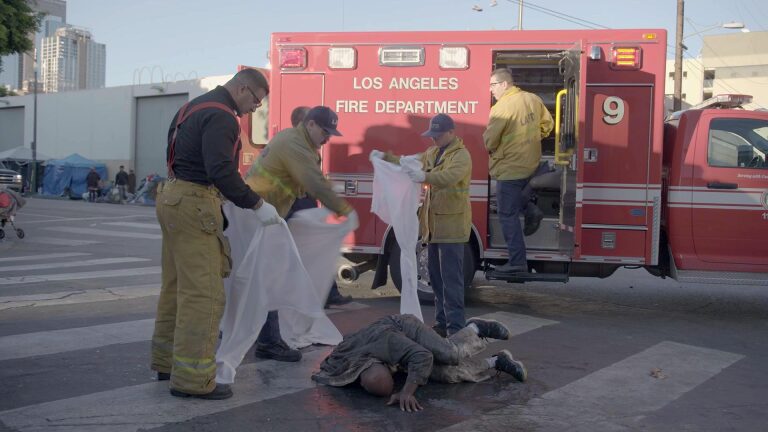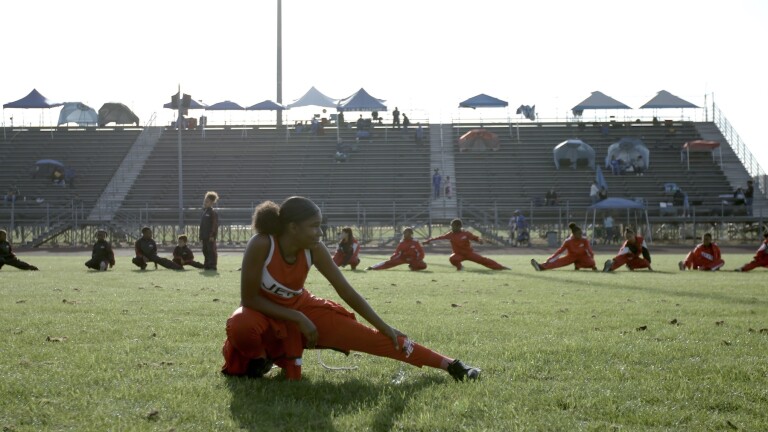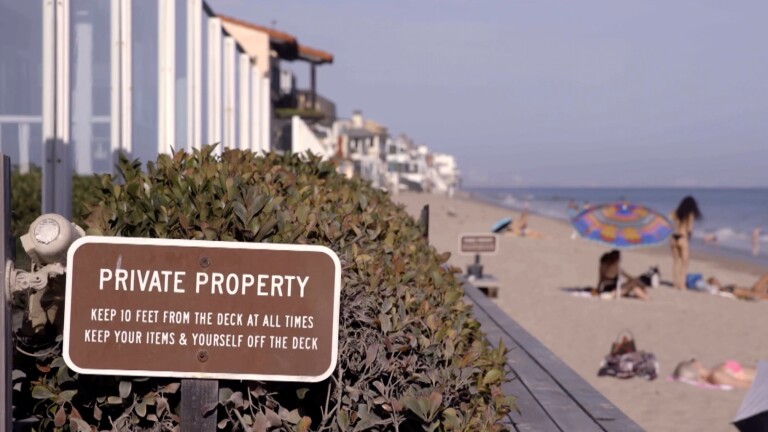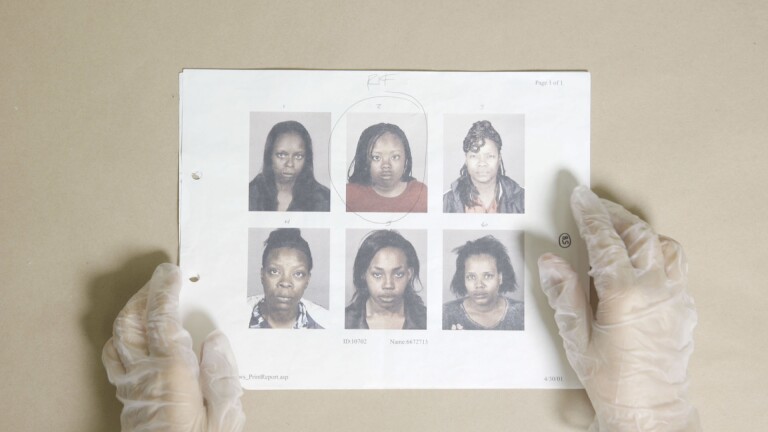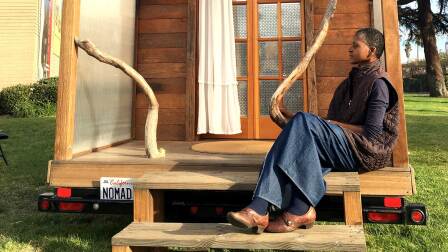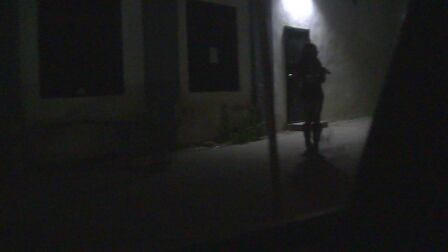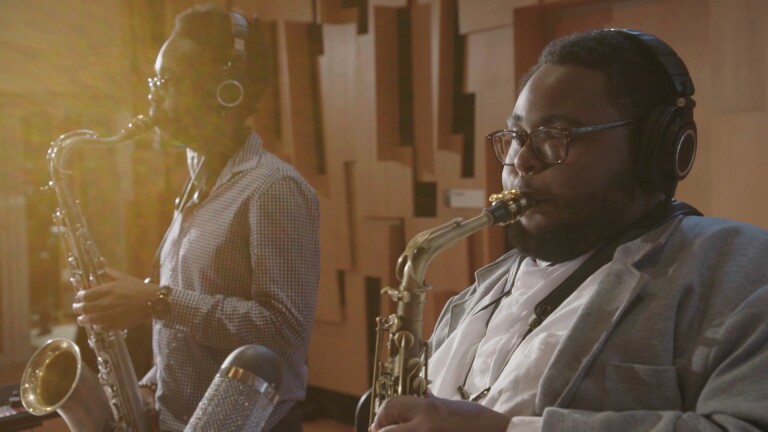
Drone Dangers
Drone technology has exploded in popularity over the past few years. During the last holiday season, it's estimated that one million drones were sold. Online retailer Amazon.com has even announced plans to execute a drone delivery service that would drop packages right to your doorstep.
But do these small, unmanned aerial vehicles pose a threat to public safety? What does the FAA have to say about these futuristic devices that sci-fi buffs have always dreamt about?
While these vehicles may be as easy to operate as a toy remote control car, they have also been widely criticized for disrupting rescue missions during natural disasters and wildfires, and diverting aircraft from a safe landing.
The FAA is working to implement new regulations and restrictions for drone use, limiting where and how high they can fly.
In this segment of "SoCal Connected," reporter Derrick Shore goes to the International Drone Expo at the L.A. Convention Center. He also interviews a couple whose house burned down in a wildfire in the San Bernardino National Forest after a drone forced firefighting aircraft to leave the area. Could a drone cause a catastrophic accident? What about privacy? Drones have already changed the way we see the world, but what is their future?
*A special thank you to DJI for helping us capture some of the unique footage in this segment.
Quick Links
Featuring Interviews With:
- Jeff Fassbinder, marketing director, Yuneec USA
- Diane Best and Christopher Lawrence, homeowners
- John Miller, spokesman, San Bernardino National Forest
- Ian Gregor, FAA spokesman
- Fuling Qin, Jiuxing Tianli Technology
- Jaime Garcia, Stop LAPD Spying Coalition
- Joyti Chand, Stop LAPD Spying Coalition
Transcript
Derrick Shore: Will our future look like this? Hopefully not. The chances are good we’ll see a whole lot more of these. Drones, or unmanned aircraft, have all kinds of personal and commercial uses. And they’ve given us a whole new way to see the world. Perhaps what’s most fascinating about drones is they’ve given us a whole new way to see the world. But even with all the great things they can do, will they make the world more convenient or more dangerous? And what about our privacy? To get some answers, I started here, at the International Drone Expo at the LA Convention Center. Drones come in all shapes and sizes. Ugh. Actually, not as bad as I thought. Drones are becoming so popular that last holiday season, an estimated one million of them were sold. And just like remote control cars, even kids can operate them?
Derrick Shore: How difficult is it to operate?
Jeff Fassbinder: To operate outside with GPS turned on it’s actually really simple to fly.
Derrick Shore: Many people fly their drones straight out of the box. Jeff Fassbinder showed me how they worked
Jeff Fassbinder: It gives you a unique vantage, gives you a unique view of filming and capturing imagery that you couldn’t otherwise capture with a traditional tripod.
Derrick Shore: But drones aren’t just for shooting video and photos.
Jeff Fassbinder: From security, search and rescue, agriculture..
Derrick Shore: So it’s more than just a toy, right?
Jeff Fassbinder: Yes.
Derrick Shore: Drones can be used for science, too. Here a biologist uses a drone with a petri dish to capture mucus samples from these whales. And Amazon says their deliveries will go airborne, too. Here’s another thing about drones: Sometimes they do this. And this. And this.
Derrick Shore: Since many drone operators have zero training and frankly just don’t know what they’re doing, they often fly unsafely and in places where they shouldn’t. Putting other aircraft and people on the ground, at risk. Diane Best learned that the hard way. She’s never flown a drone nor does she want to and she probably never expected that a drone would change her life. She and her partner, Christopher, showed me where their home once stood.
Derrick Shore: So this here was the kitchen then?
Diane: Right, see all the dishes there.
Derrick Shore: In the summer of 2015, the Lake Fire started in the San Bernardino National Forest. It was far enough away from Christopher and Diane’s home that they weren’t worried. But then…
John Miller: We had an incrusion into the temporary flight restrictions by a drone which caused us to suspend all air operations on that large fire.
Christopher Lawrence: The first fire drop the copilot noticed a drone flying which caused them to ground all aircraft through the whole night.
Derrick Shore: Suspending the fire fight caused the fire to spread over a much larger area.
Christopher Lawrence: The fire got in to the wildlands like I said about three miles, where the wind pushed through right through our property that night.
Diane: And the house burned down that night.
Derrick Shore: The house that took eight years to build gone in a matter of moments. And a 650 acres of their land? Completely charred. Frustration must be an understatement when it comes to describing.
Diane Best: Yeah.
Christopher Lawrence: It’s complete stupidity to go do that. It’s a state emergency..putting people’s lives at risk and property.
Derrick Shore: The Lake Fire was one of three wildfires last summer when rogue drones interrupted firefighters.
Responder: We’ve got a drone south of the fire…let all the aircraft know there’s a drone in the area of the fire.
Derrick Shore: A $75,000 reward has been offered to help catch the drone operators, but no luck so far. In the meantime, as more and more drones are filling the skies, what does that mean for public safety and how should they be regulated?
Ian Gregor: Ultimately anyone who flies an unmanned aircraft is a pilot and they’re responsible to fly safely.
Derrick Shore: Ian Gregor is a spokesman for the FAA.
Ian Gregor: For decades, the only people who had access to the aerospace were pilots of manned aircraft and they had extensive training and were embedded in a deeply embedded safety culture. What we’ve seen over the last year or two years is there are tens if not hundreds of thousands of users getting access to the aerospace. And these are hobbyist drone operators.
Derrick Shore: And many drone operators probably don’t even realize when they’re doing something wrong.
Ian Gregor: Many may not be aware that there are safety implications for the way they fly and there are regulations and rules that they have to obey.
Derrick Shore: Then of course is the issue of privacy. Since many drones are small and quiet, they can easily be used to spy. Look how small this drone is and guess what? There’s even a camera on this one. In some companies, even encourage spying. But it might not just be your neighbors you need to worry about spying on you. What about the police? This is a pretty large drone.
Derrick Shore: This is a pretty large drone. How is it used?
Fuling Qin: We’re trying to use for the policemen and to use for the firestation.
Derrick Shore: This Chinese company showed me how law enforcement might use a drone. So this drone can be set just to follow people and track them?
Fuling Qin: Yes, you know you have your mobile phone? And your GPS? And this one we have a GPS – so two GPS connection and it will follow your mobile phone.
Derrick Shore: So police could tap into the GPS signal in someone’s cell phone and the drone would just automatically follow them? Wow. Already about two dozen state and local law enforcement agencies are experimenting with drones or have filed for permits to operate them. But the group “No Drones LA” wants to ensure that drones are never used by LAPD.
Jaime Garcia, Stop LAPD Spying Coalition: A large percentage of Angelenos reject the use of drones by law enforcement.
Derrick Shore: In 2015, the LAPD was given two drones but they haven’t been used yet.
Joyti Chand, Stop LAPD Spying Coalition: We’ve collected over 3,000 petition signatures adamantly rejecting LAPD drone usage.
Derrick Shore: But no petition can stop the growing popularity of drones and the risks that comes along with using them. In October of 2015, a drone smashed into power lines along Sunset Boulevard in West Hollywood, leaving hundreds of residents, including me, without power. But the FAA is worried about something even more serious. Let’s say a jumbo jet is approaching LAX, a drone flies into that engine. Couldn’t that be a catastrophic plane crash?
Ian Gregor: I don’t want to get into hypotheticals. But we’ve seen what can happen with a bird strike on an aircraft and obviously we want to avoid any situation where anything could pose a hazard to any kind of aircraft. Be it a bird, be it a drone.
Derrick Shore: The number of drones spotted by pilots tripled over just one year, and most of those reports were from Southern California. Why are there so many right here?
Ian Gregor: We have a lot of major airports, and planes flying into and out of those airports fly into densely populated urban areas.
Derrick Shore: So the FAA decided it’s time for some rules. You cannot fly a drone over 400 feet. Within 5 miles of an airport, outside of your line of sight, over stadiums or crowds, and any drone more than half a pound has to be registered. Not everyone is going to read the manual or fly a drone safely or even be aware of the regulations, so how do you deal with these people who are flying near airports and flying unsafely where they shouldn’t?
Ian Gregor: Well our preference always is to educate. When we come across someone who is operating unsafely or willfully violating the regulations or is a repeat offender, we won’t hesitate to take enforcement action against them.
Derrick Shore: In the Netherlands, police are taking action by training eagles to snatch illegal drones right out of the sky. Some drone companies are already trying to get ahead of the FAA rules with new technology.
Jeff Fassbinder: Most commercial airports, built into system…it won’t boot up within a five-mile radius. If you try to get right near LAX and try to power up, it won’t work.
Derrick Shore: It’s called Geo-fencing and it created invisible boundaries restricting where a drone can fly. But new regulations and technology are too little too late for Diane and Christopher.
Diane Best: It’s still a bit of a shock every time I come here because I think about building every part of it.
Christopher Lawrence: A lot of effort and lives in danger because of one idiot.
Derrick Shore: Enforcing the new rules is going to be difficult and no matter how many regulations we have, nothing is full proof.
Ian Gregor: If you can educate people on the front end…Whoa.
Derrick Shore: I’m Derrick Shore for “SoCal Connected.
Val Zavala: The FAA has a website where you could register a drone or learn about the rules or regulations, its’ called “Know Before You Fly.”

